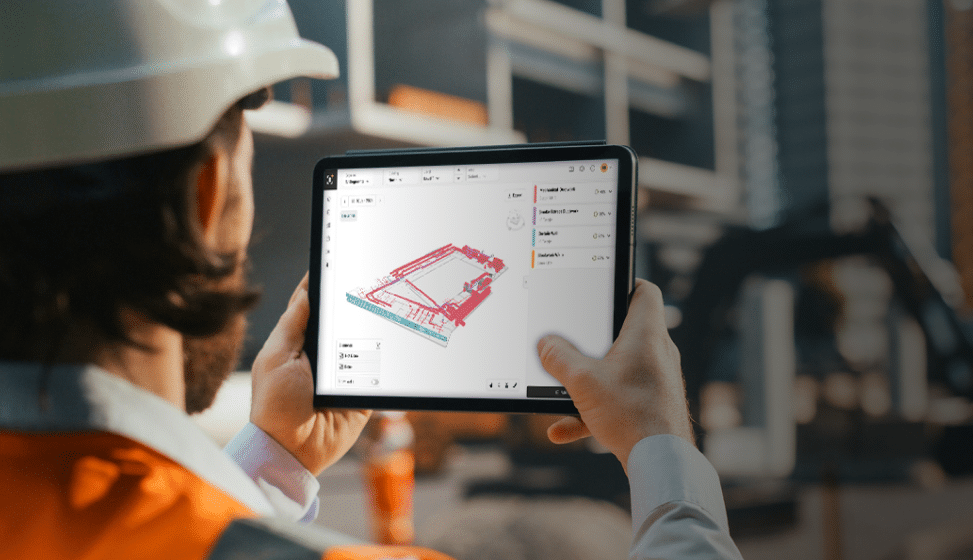Pace Control Revolutionises Construction Planning Processes

For several years construction planners have faced issues surrounding the control of pace and the industry recognizes that weak construction planning processes have often been at the centre of the problem of escalating construction costs – something Buildots is keen to address. Unrealistic scheduling is the most common factor causing project delays.
Worldwide, there is increased pressure on the construction industry to be able to build more productively and more efficiently, particularly in core markets such as housing. The use of agile digital technologies and processes is now recognized by governments as central to enabling construction processes, including construction planning, to become more productive and efficient. The question is how to best do this across each construction management process, including construction planning.
Developing the equivalent of line of balance techniques, pioneered in the manufacturing sector, for the construction sector, is one avenue we have felt worthwhile exploring. This technique suggests deeper consideration of pace and ways of controlling it should be given to overcome current construction challenges affecting many construction sectors, high-rise residential included.
The beauty of pace control
Pace control of a construction planning process critically impacts project performance in three keyways:
- It enables an immediate response to a pace anomaly to be made, avoiding potential delays and bottlenecks through continuous monitoring
- It facilitates on-demand performance health checks by comparing the pace of different trade activities versus industry standards
- It allows more efficient and precise re-planning based on the current project pace
1. Continuous pace monitoring
In most standard construction programmes, many work packages are planned to span over weeks. With that granularity of planning, if you only measure each activity on its end date, you lose precious time. What’s more, project re-planning methods that use analogue and discontinuous processes do not allow you to update a programme continuously as construction proceeds. Such processes are exasperated by unrealistic resource modelling invariably based on a worker’s availability. Too often planners can assume a resource day on site is entirely focused on construction work. This inaccurate assumption then becomes a real problem with a delay in progress feedback and increasing divergence of planned and actual construction.
Imagine drylining installation planned to take 2 weeks per floor. Continuous pace monitoring would allow you to notice much earlier in the construction process if based on the current pace it is not going to end on time or end too soon and set in motion an adverse chain effect and render workers unnecessarily idle.
Being able to continuously monitor pace and see whether one particular trade or another is underperforming or overperforming, for a construction schedule as a whole to remain on track is important. Delays need to be interrogated as they occur, mitigation measures put in place earlier and pace rates compared and adjusted as necessary.
2. On-demand performance health checks
Common causes of hiccups in construction planning processes are supply issues, use of unskilled labour, or complicated designs. In many cases, these issues can be resolved through performance health checks, available at any time, reducing costs and avoiding delays.
Let’s assume the industry standard rate for joinery is delivering 10 units per day and you are only delivering 5. Besides the fact that if you don’t deliver the required joinery at this pace it will cost you more, it also hints that you have a deeper issue with how you deal with the joinery process within your overall programme.
Having the means to carry out a performance health check on the construction process of any trade as required is valuable. It can reveal how work is progressing and potential deviations from initial programmes, and possible repercussions, at any given time during the construction progress.
3. Accurate re-scheduling based on up to date data
Nothing ever goes as planned in construction, as we are well aware, and this can be caused by complexity and the sheer amount of project unknowns. A planner's job is to track programme deviations, and quickly build a mitigation plan to deliver a project as scheduled and with minimal interruption or additional costs. Re-scheduling is also unproductive and inefficient, without accurate data, as you either have to work according to gut feelings or spend an enormous amount of time collecting data.
Without up-to-date construction pace data, how can you notice the reason for any delay is, say, a repeating 1 day delay in the mechanical and electrical delivery process per floor, or how can you notice that there are 2 unused ‘buffer’ days between some activities?
Deploying continuous digital data collection, would allow you to efficiently update a project schedule more frequently, providing a higher level of certainty for everyone involved.
Meeting pace related needs
Continuous pace monitoring, on-demand health checks and accurate scheduling can inform construction planners of potential future risks, including programmatic delays, through the accurate control of possible alternative programmatic scenarios.
The ability of construction planners to accurately measure, analyse and forecast completion times based on current pace and to be able to easily adjust project schedules following any changes is now a basic requirement.
Meeting these pace-related needs is our goal at Buildots.
Until recently pace control was an impossible task, but today with our revolutionary technology it is feasible: continuous pace monitoring is achieved through 360-degree reality capture technology, on-demand health checks possible through dashboard comparison of actual versus planned progress information, and scheduling and re-scheduling activities digitised, rendered more accurate and based on current data.


